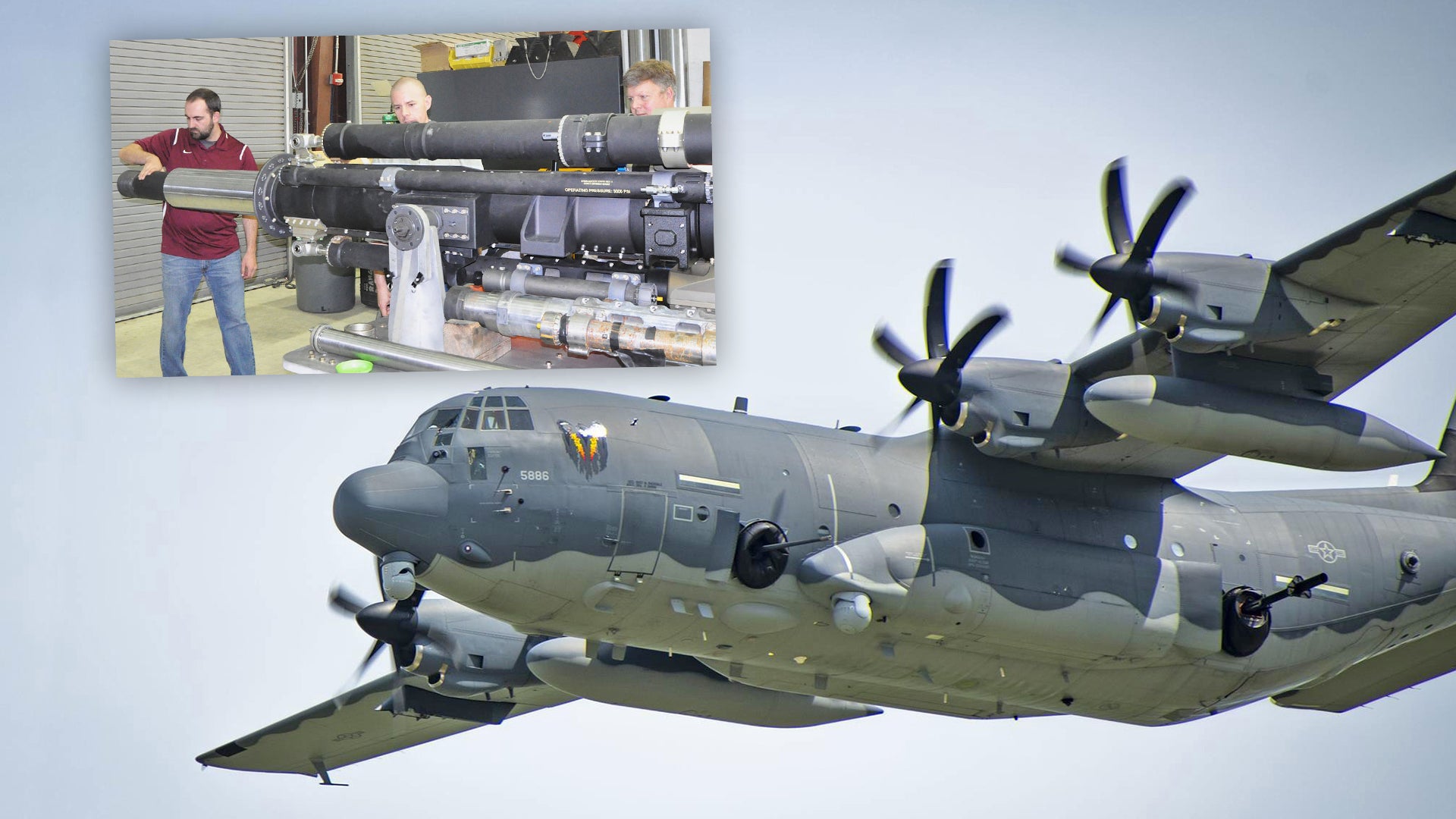The U.S. Navy recently announced that a team of its engineers had crafted an improved 105mm howitzer for use on the U.S. Air Force’s AC-130 gunships. That service’s remaining fleets of AC-130W Stinger II and AC-130J Ghostrider aircraft are currently armed with a modified version of a howitzer the U.S. Army first began fielding in the 1960s and that is no longer in operational use anywhere else in the U.S. military.
Engineers from the Naval Surface Warfare Center Dahlgren Division, also known as NSWCDD or just Dahlgren, located in Virginia, led the project to develop a replacement for the modified M102 howitzers on Air Force AC-130Ws and AC-130Js, according to a press release that Naval Sea Systems Command (NAVSEA) put out earlier this month. That team successfully built and delivered at least one prototype of that weapon.

The Navy’s release refers to this howitzer only as the Gun Aircraft Unit (GAU). GAU is just a standardized prefix in a joint Air Force-Navy designation system that is typically used for guns intended to be mounted on aircraft. For example, the 30mm Bushmaster II cannons that the AC-130W and AC-130J gunships are also armed with are designated under this same system as GAU-23/As.

It is unclear whether Dahlgren’s howitzer is entirely new or if it incorporates components from the M102. The Navy describes it as “upgraded” and a picture of the prototype, seen at the top of this story and below, does have some general features, including a top-mounted recoil system, in common with the older Army howitzer.
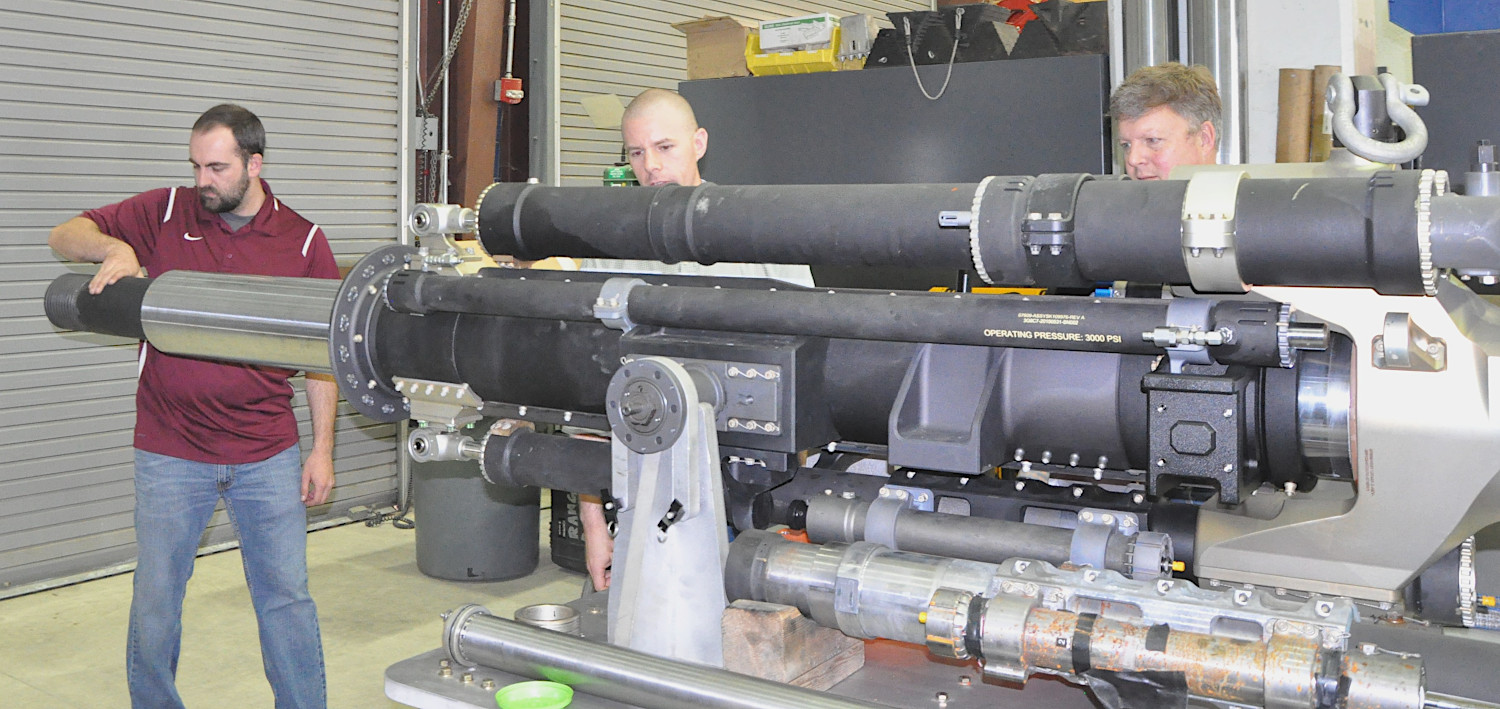
“The previous iteration of the AC-130’s 105mm gun system comprised the M102 howitzer and M137A1 recoil mechanism, which are no longer supported by the Army, meaning that an upgrade was necessary due to obsolescence and advancements in technologies since the original recoil mechanism was designed,” according to NAVSEA’s release. “The upgrades to the 105mm GAU are sweeping, however, the engineers at Dahlgren were careful to ensure that the functionality, accuracy, and usability of the weapon remain largely the same.”

“This has become a much more reliable system with less maintenance,” Matthew Buckler, the Gun Weapons System lead mechanical engineer on the project at Dahlgren, said in a statement. “If we can get a system that’s more reliable, that’s more repeatable, that works and that allows the warfighter to complete their mission every time – that’s a huge benefit for the warfighter.”
The Army’s Rock Island Arsenal designed and built the M102 in the early 1960s as a lightweight replacement for the World War II-era M101, with the first examples being delivered to units in 1964. It eventually became the service’s standard 105mm howitzer, a role it held until the newer M119 was fielded, starting in 1989. It saw major use during the Vietnam War, as well as with Army units in various conflicts after that, including the American intervention in Grenada in 1983 and the First Gulf War in 1990-1991. The last known employment of M102s in their normal indirect fire role was in 2004, when an Arkansas Army National Guard field artillery battalion deployed with these weapons to support operations in Iraq. Various American allies and partners around the world continue to use these weapons.
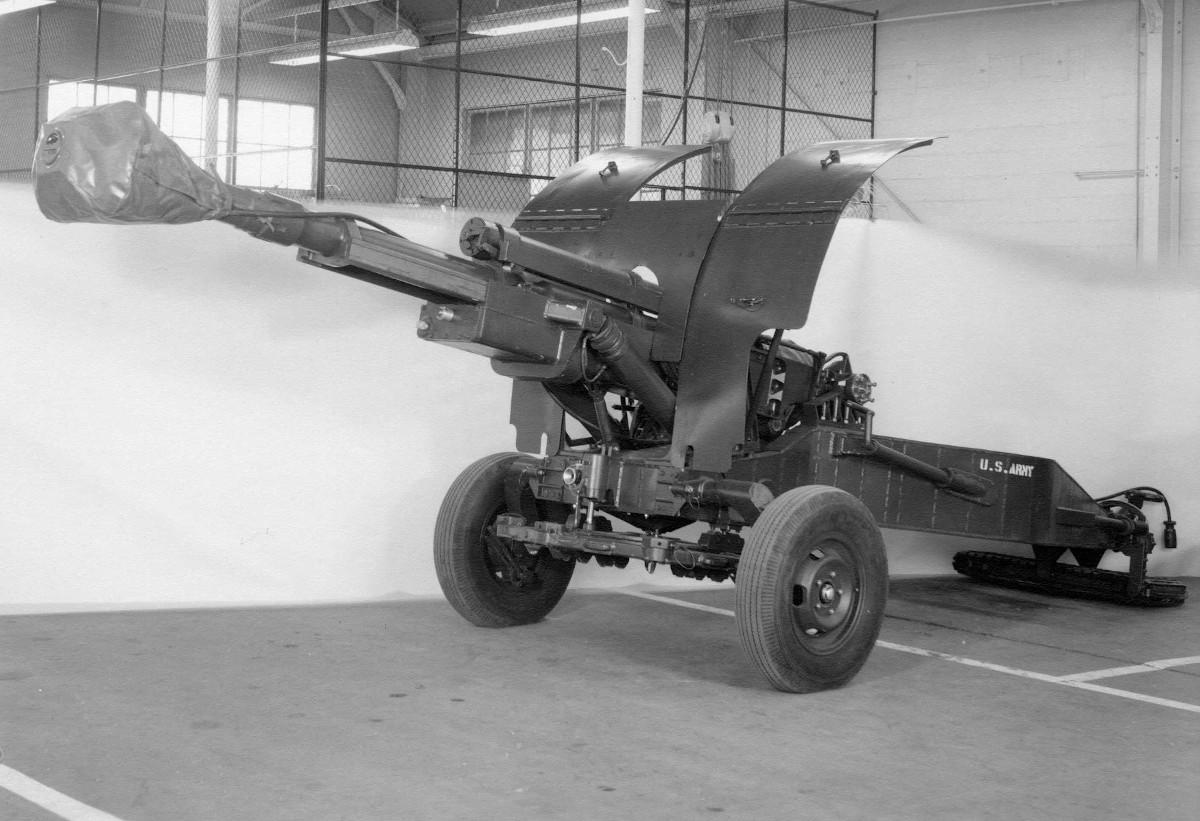
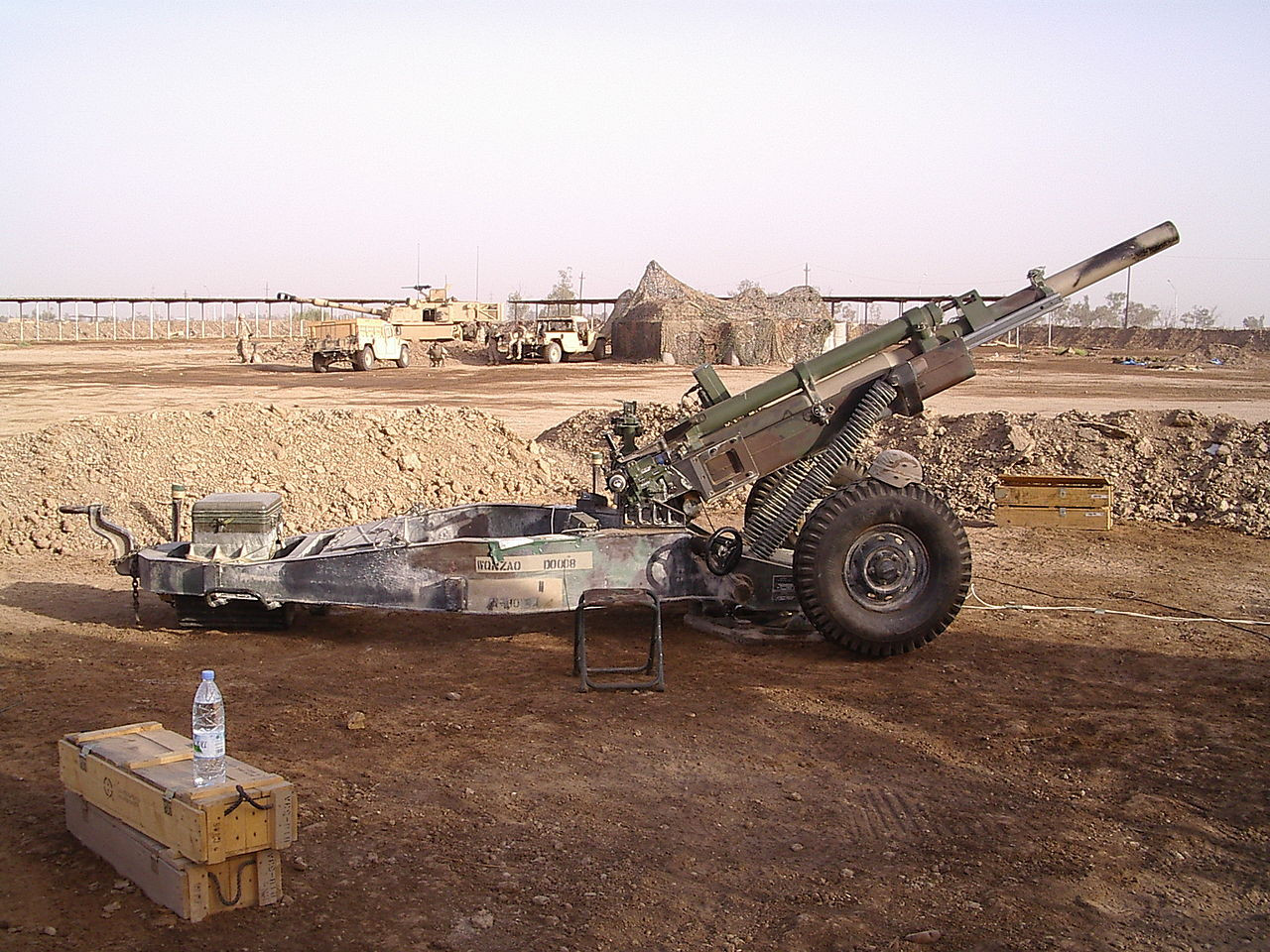
In 1970, the Air Force had first begun testing a modified version of the M102 as a new weapon for its AC-130 gunship as part of a program called Pave Aegis. The service began integrating those weapons onto a number of AC-130E aircraft the following year, examples of which were subsequently employed in combat in Southeast Asia. The 105mm howitzer became a standard weapon on all subsequent AC-130H and AC-130U aircraft.

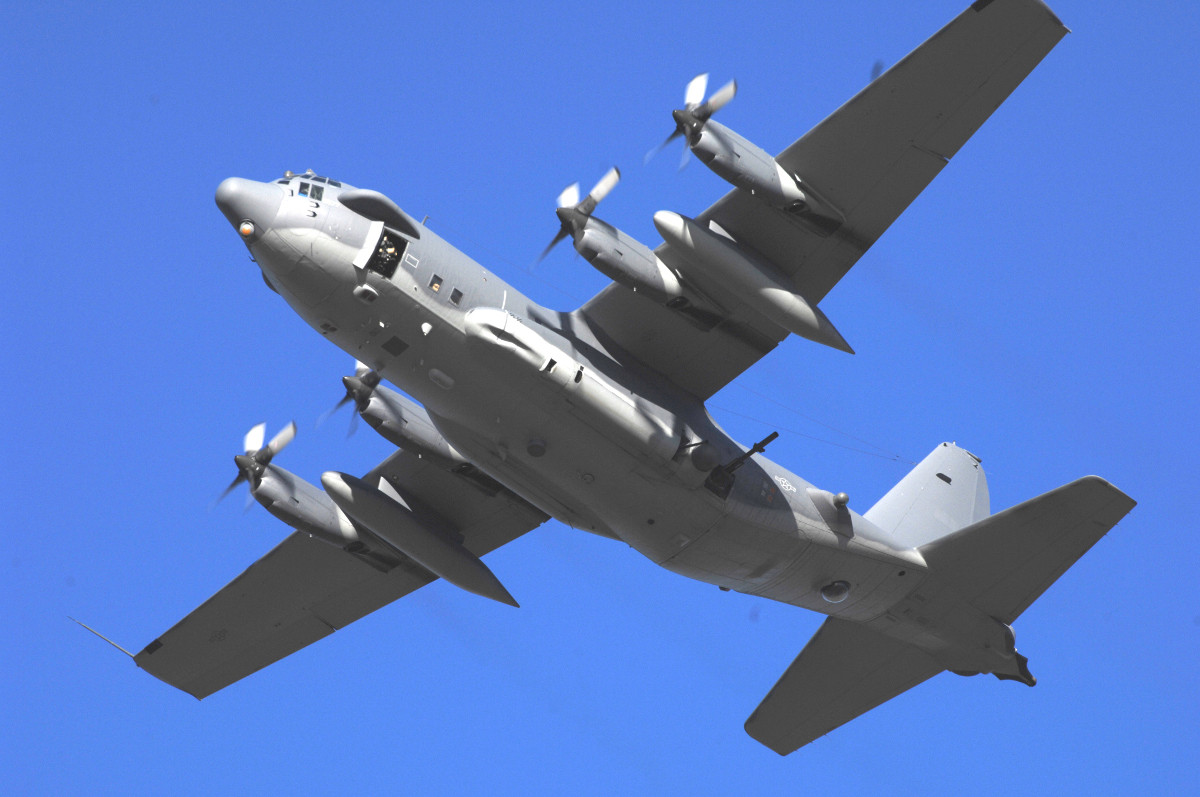
The Air Force did not initially plan on integrating the howitzer onto newer AC-130W sand AC-130J aircraft, placing a greater emphasis on precision-guided munitions and reducing the gun armament to a single 30mm GAU-23/A cannon.
However, the M102 offers distinct capabilities compared to precision-guided bombs and missiles, particularly in its ability to quickly focus a significant amount of firepower on relatively small target areas and then rapidly shift focus to new ones. The howitzer can also fire different types of ammunition, including air-bursting rounds, giving it added flexibility against different target sets.
The GAU-23/A could offer some of this same operational flexibility. However, the destructive power of its 30mm shells is nowhere near that of an 105mm round, which can be used to reduce structures and other obstacles, engage hardened targets such as bunkers, and take out armored vehicles, among other things. In the end, the Air Force changed course and add the M102 to the Stinger IIs and Ghostriders as part of an upgrade package for both types.
The video below shows testing of the 105mm howitzer upgrade package for the AC-130W gunship in 2013.

The issue, of course, is that the M102 is a dated design that is no longer in production or active use anywhere else in the U.S. military, and it has a steadily dwindling user base abroad. All of this makes sustaining a relatively small number of these guns for use on the Air Force’s AC-130s an increasingly costly and complex affair.
This is not the first time the Air Force has faced a similar issue with regards to aging weapons on its AC-130s. The AC-130U, all of which have now been retired, was the last platform of any kind in the U.S. military to be armed with the 40mm Bofors cannon. Before those aircraft were finally retired, it became costlier and costlier to source spare parts and ammunition for those guns, leading the Air Force to scour arms dumps abroad for barrels and to refurbish stocks of World War II-era shells.

Why the Navy was chosen to develop this improved 105mm gun system for the Air Force’s AC-130s is unclear. This could be due in part to the Navy’s general experience with very large-caliber guns that are designed to be fired accurately from platforms (ships) potentially moving quite violently in multiple directions at once. Whatever the case, Dahlgren certainly has extensive past experience on programs related to the AC-130, including supporting the past development of the 105mm howitzer package for the AC-130W and AC-130J and a current project to integrate a laser directed weapon on a J model gunship.
Dahlgren’s engineers have now been called upon again to help ensure the Air Force’s remaining AC-130 gunships continue to have the option of firing 105mm shells, in addition to their other diverse armament options, for the foreseeable future.
Contact the author: joe@thedrive.com
